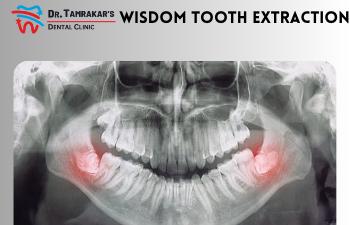Wisdom tooth extraction is a common dental procedure that involves the removal of one or more wisdom teeth, which are the last set of molars that typically emerge between the ages of 17 and 25. Wisdom tooth extraction is often necessary due to a lack of space in the mouth, leading to various complications such as impaction, crowding, infection, or dental shifting. Here's an overview of the wisdom tooth extraction process: Examination and X-rays: Your dentist will examine your mouth and may take X-rays to evaluate the position of your wisdom teeth and determine if extraction is necessary. X-rays help in assessing the angle, position, and potential complications associated with the wisdom teeth. Anesthesia: Before the extraction, you'll receive a local anesthetic to numb the area around the tooth or teeth to be extracted. In some cases, your dentist may recommend sedation or general anesthesia to help you remain comfortable and relaxed throughout the procedure. Extraction: The dentist or oral surgeon will begin the extraction by creating an incision in the gum tissue overlying the wisdom tooth if it is impacted or partially erupted. In some cases, a small amount of bone may need to be removed to access the tooth. The tooth may be extracted in one piece or divided into smaller sections for easier removal. The dentist will gently rock the tooth back and forth to loosen it from its socket before extracting it. Post-extraction care: Following the extraction, you'll be instructed to bite down on a piece of gauze to control bleeding and promote blood clot formation. The dentist may place dissolvable stitches to aid in the healing process. You'll receive instructions on how to care for the extraction site, including proper oral hygiene practices and dietary restrictions. Recovery: The recovery period varies depending on the complexity of the extraction and your body's healing ability. It's normal to experience swelling, discomfort, and some bleeding for a few days after the procedure. Your dentist may prescribe pain medication or recommend over-the-counter pain relievers to manage any discomfort. Applying an ice pack to the affected area and eating soft foods can help alleviate swelling and aid in the healing process. Follow-up: Your dentist may schedule a follow-up appointment to monitor your healing progress, remove any stitches if necessary, and ensure there are no complications. It's important to note that the extraction process can vary depending on the position and condition of the wisdom teeth. Your dentist or oral surgeon will evaluate your specific situation and provide personalized recommendations and instructions. It's essential to follow their guidance for a smooth recovery and minimize the risk of complications.


